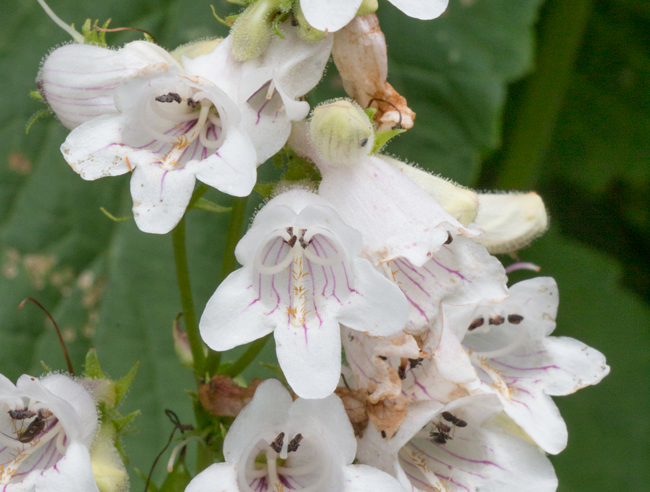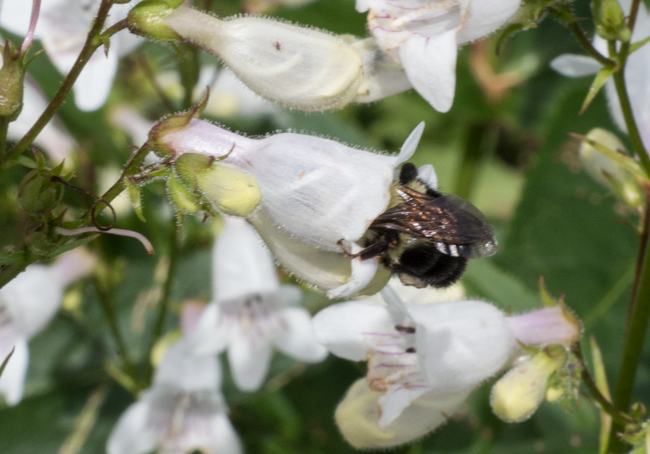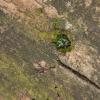This post is part of an ongoing series highlighting some of the best plants for pollinators from coast-to-coast. Drawing from our books 100 Plants to Feed the Bees, Gardening for Butterflies , and our Monarch Nectar Plant Guides.
Beardtongue
Penstemon spp.
Foxglove beardtongue (Penstemon digitalis) has a few interesting "design" features worth noting.
Beardtongue derives its common name for the hairs that line the protruding lower petal of these tubular plants. These hairs serve an interesting function, forcing bees deeper into the flower. Some Penstemon species also have small protrusions in the flower interior that act like hooks, giving the bee a bit of a squeeze and making them struggle a tiny bit to escape. As they do so, the anthers of the flower wrap around the body of the bee, adhering pollen where it will be perfectly aligned to meet the stigma of the next flower.
If you look into the tubular flowers you’ll notice several distinct lines leading to the back of the flower known as nectar guides. These lines act like runway lights, advertising to bees that “the good stuff is back here!”


Like Culver’s root, beardtongue fills a critical role, providing pollen and nectar at a time when resources are dwindling at the end of spring. Their long bloom time can stretch between late spring and mid-summer when other plants are just beginning to bloom. Beardtongue is easy to add to the landscape as it’s one of the smaller wildflowers. Low growing foliage is topped by flower masses that reach around 2’ in height and give way to seed heads that are enjoyed by birds late in the season. Beardtongue is visited by a number of bees including sweat bees, leafcutter bees, and is frequented by newly hatched bumble bees.
Native Range: There are roughly 150 species of Penstemon in North America, and many varieties are available in the nursery trade. Flowers range in color from pink, red, blue, white, purple, and seemingly every shade in-between. Blue and white flowers seem to attract the most pollinators. Hairy beardtongue (Penstemon hirsutus) is native predominately in the Northeastern U.S. and Canada, as far west as the Great Lakes region. Penstemon digitalis extends a bit farther west and as far south as Texas. Many western species exist and are often drought-tolerant selections.
Best For: Providing important late spring/early summer resources. A prolific nectar producer, it is visited by a huge diversity of butterflies, moths, and bees.



